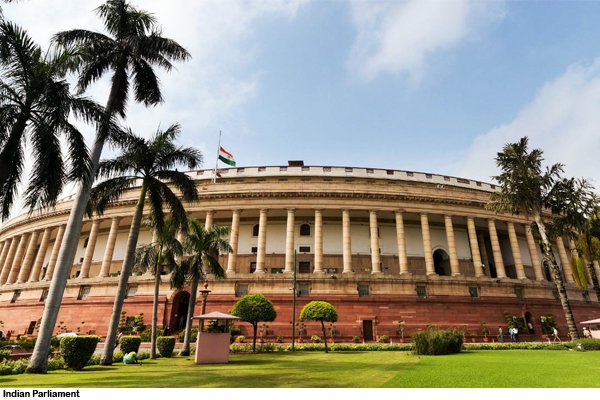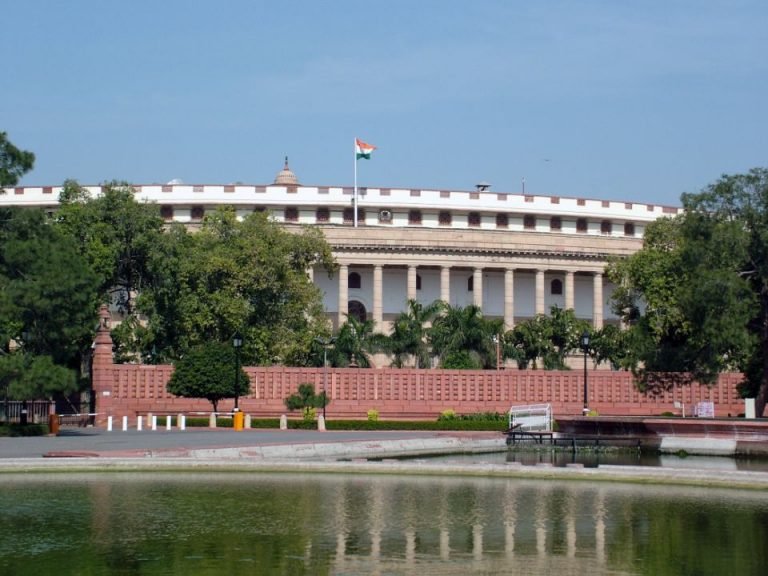The Parliament House of India has 144 pillars on the first floor and is the most exclusive parliament building anywhere in the world.

New Delhi: Exactly a hundred years ago, on 12 February, the foundation stone of the Parliament House was laid. 26 years before India became independent, the Duke of Connaught of Britain laid the foundation stone and said that it would stand “as a symbol of India’s rebirth yet as high destiny”. Sir Herbert Baker, who along with Sir Edwin Lutyens, was chosen to design the new imperial capital in the Raisina Hill area in Delhi, designed the building, with a diameter of 560 feet and a circumference of one-third of a mile.
Recalled the grandeur of the Acropolis in Athens, the first building block of India’s parliamentary democracy, the heartbeat of Prince Arthur, the Duke of Connaught and Strathorn, which would become the circular, colonized structure. He was the uncle of the then King of the British Empire, King George V. The Duke of Connaught placed a large block of red sandstone inscriptions in Hindi, English and Urdu in that order. It carries their name and historical date in Roman numbers – “XII February A.D. MCMXXI”.
“I only need to remember the Acropolis of Athens, the capital of Rome, and the great cities of the East famous for its grandeur and culture. India itself is rich in such precious heritages. From the pillars of granite on which the inspired emperor. Ashoka engraved his imperial inscriptions, through the checkered centuries, beneath the magnificent palaces of the Mogal emperors, every age has left behind him a few monuments with their achievements, the Duke of Connaught said.
The record shows that the grand ceremony took place in the presence of the then Viceroy Lord Chelmsford and a large number of princely rulers and other dignitaries. The publication of Superintendent Government Printing, Calcutta on the visit of the Duke of Connaught in 1921 is the full text of the speeches made on the occasion. At the ceremony of laying the foundation, the Duke of Connaught said, “These buildings will not only be home to new representative institutions, which mark a huge progress in the political development of India and the British Empire, but I am confident, will stand in the future.” As yet a symbol of India’s rebirth for generations to a higher destiny.
All “great rulers, every great people, every great civilization have left their own record in the pages of history, along with stone and bronze and marble”. The Duke of Connaught, which is followed by Delhi’s first and largest shopping space, enhanced the value of architecture and underscored its role in politics and nation building.
According to old archival images, a beautiful pavilion was constructed on the site during the foundation stone ceremony. Later, a circular railway track was temporarily laid around the structure during construction to transport raw materials. The architectural masterpiece, originally called the Council House, was inaugurated six years later in 1927, 20 years before India attained its independence on 15 August 1947 by the then Viceroy Lord Irwin.
According to the plan, the building was to be constructed for the construction of royal legislatures – the Central Legislative Assembly (which took the form of the Lok Sabha), the Council of State (Rajya Sabha) and the Chamber of Princes (now used for other purposes). – A library with a central hall and a place to hold joint sessions. All within the aesthetic circular structure.
The massive building covering an area of about six acres and its creamy sandstone colony of 144 pillars on the first floor is one of the most exclusive parliament buildings anywhere in the world. In 1929, Bhagat Singh threw a bomb in his chambers.
The Duke of Connaught laid the foundation stone of Parliament House two days ago, he laid the foundation stone of All India War Memorial or India Gate in Delhi as it is known today. In 1911, King George held a grand court in Delhi where he also announced the relocation of the royal capital of Delhi from Calcutta.
Lutyens and Baker shaped the new imperial capital, with Viceroy’s House (now Rashtrapati Bhavan) and North Block and South Block as the focal points of “New Delhi”, as the city was officially designated in 1926 it was done.
Swapna Ladle, Member of Parliament of Delhi, said, “As long as we know it, the Council House or Parliament House, as we know it today, was built, the legislature was housed in the Government’s prestigious old Secretariat building.” Author of “Connaught Place and the Making of New Delhi”.
On February 8, 1921, the Duke of Connaught inaugurated the Chamber of Princes, and the following day, according to Superintendent Government Printing, opened the Legislative Assembly and the Council of State in an impressive ceremony at the Old Secretariat.
In December this year, Prime Minister Narendra Modi laid the foundation stone for a new parliament building, which will be built close to the old price, criticizing many heritage lovers and architecture experts, who fear the old heritage structure. The new building is expected to be completed in time for the 75th anniversary of India’s Independence Day.

